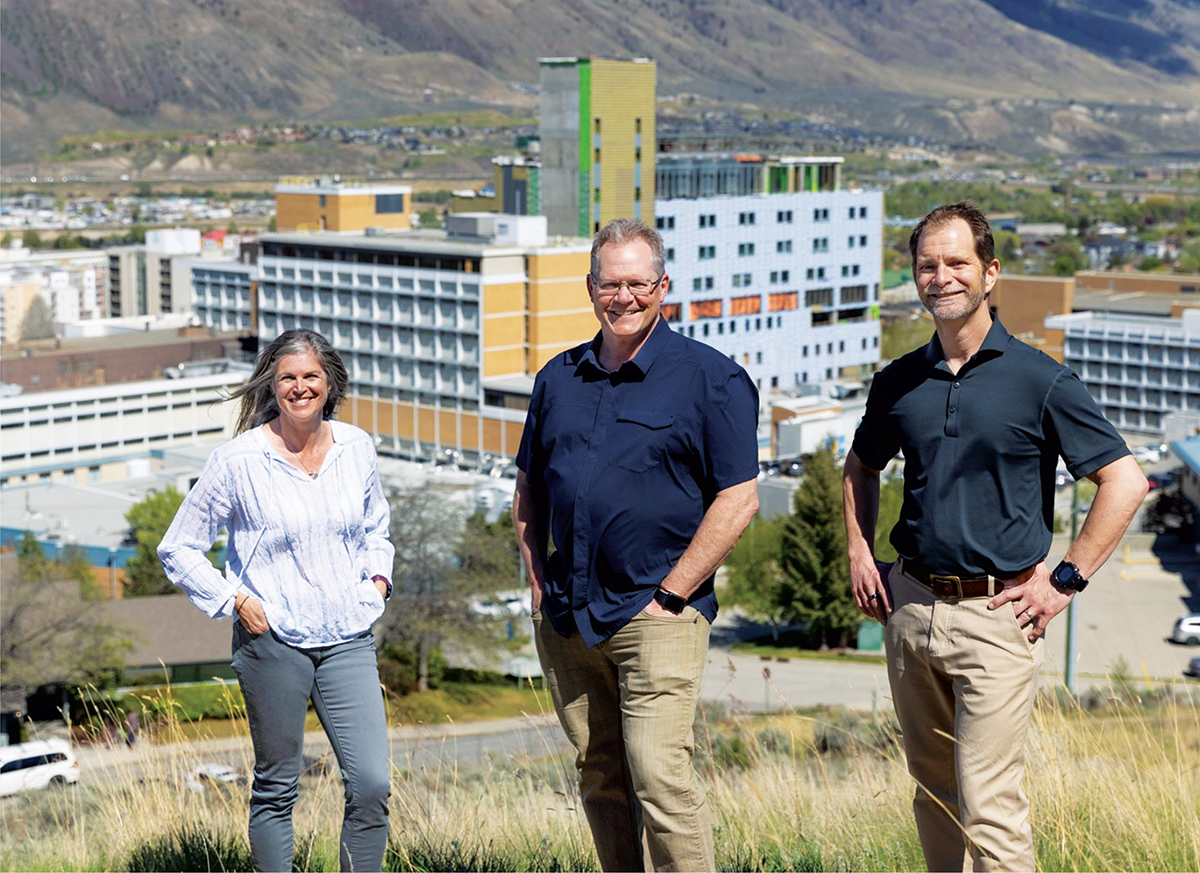Emergency preparedness project rises to the challenge with pandemic response
In recent years, we’ve grown increasingly accustomed to emergency situations in BC. Forest fires, flooding, and other natural disasters are on the rise, and the province’s hospitals have been developing their responses to these events and their effects on public health.
As the physician lead for the Thompson Region Division of Family Practice (TRDFP) with a special interest in emergency disaster management, I began thinking that the burden of such crises should not fall entirely on hospitals when there are community primary care providers that can share that burden. Dividing the load would allow hospitals to treat emergency patients when appropriate, while freeing them from tasks that might be handled by others, such as respiratory ailments caused by forest fire smoke.
The TRDFP agreed and embarked on an Emergency Preparedness and Response Project in 2019 with funding from the Shared Care Committee. In addition to me, the project team included Dr Joslyn Conley, community specialist lead; Ms Rhonda Eden, project lead; and Mr Colin Swan, Interior Health emergency management coordinator (Kamloops, Thompson Cariboo Region). Collectively, we began exploring how to integrate community care providers into emergency planning in collaboration with the health authority.
Then COVID-19 hit, and it became clear that not only was the crisis a threat to the efficient operation of our hospitals, it was also unsafe for panicked communities to gather in emergency wards en masse for everything from COVID-19 testing to asthma attacks. No matter the emergency, hospitals must continue with their work, from delivering babies to doing heart surgery. The theme of our Shared Care project became all the more relevant, because its objective was to distribute the load more equitably, preventing Interior hospitals and medical facilities from being swamped by people who could readily be helped elsewhere in the community.
The team immediately rallied to shift the focus of the project to a community emergency response. We seized the chance provided by the pandemic to help develop community resilience in real time, fostering partnerships, building networks, and facilitating effective communications. Meanwhile, the division facilitated the sharing of emergency management expertise between its partners throughout the health authority.
This response was its own form of preparedness. The division created geographical groupings of its primary care providers—forming community-wide “division member” networks that included family physicians and nurse practitioners, medical office assistants, and partners such as community specialists, allied health care professionals, and Interior Health and government representatives.
Each network identified a physician and an administrative lead, which allowed for efficient communication both upstream and downstream. When a call went out for personal protective equipment (PPE) early in the COVID crisis, for instance, health authority supplies were rapidly directed to those most in need.
The problem with emergency disaster management is that when you’re in the midst of a community crisis, you don’t have time to plan for a better response in the future, and immediately afterward you’re exhausted from having responded as best you could. Emergencies are usually short-lived as well—they’re resolved and then the community moves on. However, as a long-term public health emergency, the pandemic has been an eye-opener. While terrible on so many fronts, it has left a positive legacy in the aforementioned improvements—channels are open throughout the health care community, and the importance of integrating community providers into emergency planning is now abundantly clear.
When the dust settles on the pandemic, our team hopes to bring together emergency response providers from across the province, even from across Western Canada, for a symposium. The lessons we’ve learned over the past year, within our Shared Care project and beyond it, are that collaboration, integration, innovation, education, and funding are key to emergency management success. Ideally, BC will establish an ongoing province-wide network with a solid organizational structure and the backing of the divisions and the health authorities, merging the skills of clinical champions of emergency planning with those of community health care providers, among other crucial players.
—Graham Dodd, MD
Physician Lead, Emergency Preparedness and Response Project
Thompson Region Division of Family Practice

From left: Rhonda Eden, project lead, Dr Graham Dodd, family physician lead, and Colin Swan, Interior Health emergency management coordinator, in Sahali Terrace Nature Park overlooking Royal Inland Hospital in Kamloops.
hidden
The Emergency Preparedness and Response Project is funded by the Shared Care Committee. This article has not been peer reviewed by the BCMJ Editorial Board.

